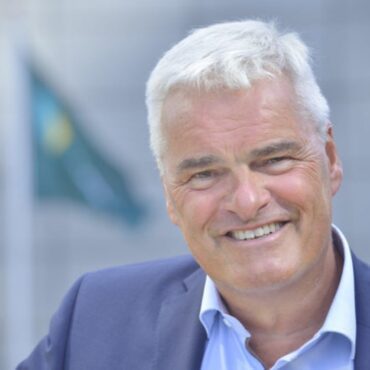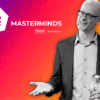

By David C Forman, Author of “Fearless Talent Choices”
WHY SHOULD YOU CARE?
We face challenges never seen before that created new circumstances for organizations to adapt and innovate. Capitalizing on their talent and leveraging their most valuable assets will provide a major advantage for them.
The third decade of the 21st Century is off to a rocky start. Enormous strains have been placed on society, organizations, and ourselves by the pandemic, international discord, a struggling economy, assaults on democratic institutions, the spreading of intentional disinformation, and the continuing quest for social justice. As painful as these experiences have been, the worst action would be to pretend they did not occur, were an aberration, or just simply bad luck.
The world is now characterized by three interacting forces. First, change is occurring at an unrelenting pace. Stability has vanished as we are buffeted by a growing legion of problems, many of which are not controllable. Second, the world is a smaller place. We are not just interconnected but interdependent. Just consider the impact of supply chains that extend around the globe. We need a bigger lens because an occurrence in a remote part of the world can be on our doorstep in a flash. The pandemic, as we are all painfully aware, knows no boundaries. And third, given all the disruptions that can occur at any time, the future is hazy at best. While the future cannot be predicted, it is increasingly incumbent on leaders to anticipate possible futures that might occur and to prepare now.
These three underlying conditions—unrelenting change, global interdependence, and uncertain futures–must be addressed; but so must the likely changes in how we work, organize ourselves, and view talent.
“The greatest danger in times of turbulence is not the turbulence. It is to act with yesterday’s logic.” – Peter Drucker
A Way Forward
Thankfully, respected leaders and researchers have given this world some thought. In “Talent Wins,” Ram Charan and his colleagues have three pieces of advice for how to succeed in an economy that has “decimated predictability.”
- Put your best people in positions that contribute significant value.
- Free people from bureaucratic structures designed for a different age.
- Provide opportunities for people to continue to learn and expand their skills.
Satya Nadella, the CEO of Microsoft, has discussed lessons for his company. He observes that the last six to nine months has constituted the world’s largest experiment for remote work ever conducted. His primary reflections: “Going forward, we are thinking about productivity in an organization as being defined by the combination of three things—collaboration, learning and well-being.”
In “Humanocracy,” Gary Hamel and Michele Zanini (2020) underscore the challenge to create organizations that are as amazing as the people inside them. The culprits, they believe, are bureaucratic barriers (see Charan’s second point) that are equivalent to a tax on productivity. They argue that organizations need to be more innovative, adaptable, inspiring, and resolute. A truly resilient organization overcomes barriers and is characterized by:
- Rushing out to meet the future
- Changing before it had to
- Redefining customer experiences continually
- Capturing more than a fair share of opportunities
- Never experiencing an unanticipated earnings shock
- Growing faster than rivals
- Having an advantage in attracting talent
These is a high bar, but these are the types of characteristics that can penetrate the uncertainty and new terrain that we all face. But how do we get there? Choices will have to be made, and both large and small steps can be taken now. The journey can begin with the following baker’s dozen ideas on enhancing the workplace to unleash the workforce.
A (Baker’s) Dozen Talent Resolutions for 2021
The concept of a baker’s dozen originated in England in the 1200s as a protection against bakers selling ‘light’ loaves of bread. A 13th loaf was included when a dozen were ordered. This helped ensure that customers got their just portions, and that the baker did not go to jail. So here are 13, not just 12, ideas for a successful 2022.
1. Take Good Care of the People You Have. This is obvious; however, common sense is not always common practice. Focus on the people that have stayed with you. Repay their loyalty with appreciation, investment, and new opportunities. Remember that the cost of losing good people is at least 1.5 times their fully burdened salary. Keeping good people in your orbit is both the right thing and the right business thing to do.
To Do: Provide new challenges; thank people for their commitment; make it easy to move from one job to another (open talent marketplaces); regularly share company information; demonstrate trust; and create opportunities for people to participate more fully.
2. Develop a Job Impact Statement (JIS). Job descriptions highlight “what” to do, a job impact statement describes “why” the job is important. Employees want to make a difference and the JIS shows how they contribute value. It creates a “line of sight” between their job and meaningful outcomes. As John Sullivan (2020) has noted, we often expect managers to provide this link, but most cannot. This connection, therefore, never gets made; but it is too important to be left to chance.
To Do: Identify crucial outcomes that distinguish the business for different stakeholders and audiences; focus on multiple bottom lines not just financial goals; and select from examples such as improved customer experience, higher quality, less rework, stronger partnerships, higher customer loyalty, improved innovation, greater collaboration, meaningful community projects, and enhanced sustainability.
3. Hire for Propensity to Learn. The half-life of knowledge is constantly shrinking. For technical and engineering knowledge, it is roughly in the three to five year range. Everything we learn has an expiration date. Instead of hiring solely for specific skills and “what people know,” focus on “how quickly they learn;” because this is an essential survival skill in a turbulent world. This is a meta-skill because it leads to the successful and enduring use of more specific skills
To Do: Look for people with a range of experiences; have people describe how they learned a new skill or capability; determine if people have a learning mindset, have candidates describe how they used their professional network as a learning resource; and look for people who are curious, ask good questions and are quick studies.
4. Provide Learning Stipends for Employees. Virtually every researcher identifies the importance of ‘opportunities for learning and growth’ as being a key ingredient of employee engagement and commitment. Take this to a new level by letting employees, not the company, choose. A company can prescribe what it thinks is important, while a person makes the choice to subscribe to what they want to learn. The difference between prescription and subscription may seem minor, but it is very significant in the world in which trust and partnership are so valued. Give employees the clicker.
To Do: Establish individual learning accounts; provide information on likely high impact new skills that are within reach for each person; establish learning partnerships that provide resources to employees; encourage people to be coaches and mentors; and remove barriers to learning.
5. Crowdsource Bureaucracy Busting and Innovation Programs. The basic principle for this resolution is that people closest to providing value and doing the work are in a better position to know what is right, wrong and needs to improve. Business leaders that are several layers away from this action often miss the mark. Good ideas can come from anywhere, and they should be encouraged and recognized. Open up the process for making improvements, fixing problems, and coming up with new ideas.
To Do: Encourage process improvement suggestions at all levels; develop social media platforms for new idea generation from employees, partners, and customers; establish recognitions for best new ideas; highlight innovators in the annual report and company meetings; establish competitions for new products, prototypes, and experiments; and reward groups and individuals undertaking the most experiments.
6. Build in Flexibility and Choice. The pandemic, among other factors, has caused a rethinking of how work gets done. For many jobs, location is not important; it is productivity that counts. Give people the choice so that they can do a better job balancing their priorities. When people are given the choice, they will repay the trust shown by stronger commitment and deeper ties to the organization.
To Do: Focus on flexible policies, remove bureaucratic barriers that force unnecessary compliance, show confidence in people by eliminating needless sign offs on, for example, expense reports and travel requests, provide virtual options, make allowances for health care and family conditions, demonstrate a caring for different communities and situations.
7. Have Frequent Huddles. A huddle is not a meeting. It is a quick get together to ensure that everyone is on the same page. In a turbulent world, it is easy to get out of alignment. If a car is out of alignment, it wanders all over the road. If an organization is, it also wastes tremendous amounts of time, energy and resources. It is easy to get disconnected when conditions are in a constant state of flux.
To Do: Get together for quick check-ins every day; think of doctors doing rounds as opposed to sitting in formal meetings; give people opportunities to speak up and ask questions; raise potential situations and ask if people know what to do; and look for natural touchpoints to connect with team members quickly, openly and without formal restrictions.
8. Strengthen the Broader Community. People want to contribute to multiple bottom lines, not just business results. Provide employees opportunities to make a difference in many ways within and outside the workplace. Community activities are a great way to make a difference to the local community, environment, personal health and skills, and the planet. They also are excellent ways to meet more co-workers and deepen relationships with colleagues.
To Do: Commit to community priorities; address the top three social issues faced in each regional community; look for building projects within the community; encourage employees to work on nonprofit boards; work with veteran groups; adopt charities; and improve the health, capability, and fitness of local community members.
9. Foster Transparency. Great workplaces are reciprocal: they are fair and productive for both the organization and the individual. If one partner holds power and information over the other, then trust wanes and the relationship is no longer as meaningful. There is also a basic belief that if individuals have access to the information they need, they will make the right decisions. All too often information is withheld from people for no apparent reason, other than to extend control and dependency.
To Do: Identify the few secrets that should be kept (such as new product research); share business results with all employees; post results of engagement and customer satisfaction surveys for all to see; eliminate policies (such as expense account and vacation monitoring) that reduce trust; and use transparency as an accountability standard.
10. Recognize that Work Is Now a Team Sport . Most work done in organizations is accomplished by project teams that are agile, cross-disciplinary, and self-governing. Buckingham and Goodall (2019) estimate that more than 80% of work completed in medium and large organizations is now team-based. And as teams become even more prominent, the relationship, trust and accountability among team members becomes critical to high-performing teams. Bosses were more significant in hierarchical organization, but colleague responsibility and accountability are even more important in team-based settings.
To Do: Encourage cross-functional team assignments; create colleague letters of agreement in which team members commit to each other on responsibilities, expectations, interactions, and outcomes; support ‘psychological safety’ team cultures; and post outcomes and results for all to see (transparency).
11. Embrace Change. If we are serious about being agile, responsive, and innovative, we must embrace risk and change, and accept failure. Most innovations fail, and people will be unwilling to take risks unless the environment is supportive and reassuring. In traditional methodologies, change was anathema and a sign of poor planning and execution. In agile methodologies in which speed and responsiveness are essential, change is embraced, expected, and celebrated. These are the conditions in the AC world, and they could not be more different than what existed previously.
To Do: Celebrate courageous failures as learning moments; reward experiments and new approaches; recognize risk takers; establish safe zones where any comment or insight is encouraged; support the challenging of conventions; encourage cross-disciplinary approaches; involve customers in ideation; and reduce typical change management practices which focus on efficiency and compliance.
12. Take Time for Renewal. Human Beings wear out. Burnout is a major concern because our bodies and brains have been molded over the millennia in ways that often run counter to the modern workplace. Consider the fact that research on high performers has indicated that they are very good….at taking breaks. They understand the need for periods of rest and rejuvenation to continue to be effective. Jeff Bezos, for example, works on his toughest problems only in his ‘high IQ time’ and does not take meetings before 10 am.
To Do: Understand how you perform best; focus on 90 minute productivity blocks; set aside time to think strategically; don’t eat lunch at your desk; take short walks outside in the morning and afternoon; get at least 7 hours of sleep; establish a discipline around meetings and mobile devices (huge time wasters); and think about productive time as bursts of high impact time (90 minutes) followed by periods of rejuvenation—-more like interval training for a track athlete rather than a continuous sprint.
13. Be Fearless. Timid doesn’t work in turbulence. It is hard to ascend above the cacophony of constantly changing voices, perspectives, and even disinformation in the AC world. But it can happen with competence, vigilance, and focusing on what is important: The incredibly important task of unleashing human performance to drive AC business results, given all that we know about its challenges.
To Do: The previous 12 resolutions.
These talent and business resolutions for 2022 can be a major reset; and when implemented, will enable us to speak with a different voice. One that is more confident, authoritative, and credible because we are addressing the most significant issue facing organizations today. The organizations that capitalize on their talent and leverage their most valuable assets will have a major advantage going forward. And when many of these dozen resolutions take hold, it is the baker’s benefit—the one unexpected gift– that now can be heard. Be Fearless.
Meet the author at the upcoming Talent@Work Forum
Written by: Dave Forman
Culture Employee Engagement Employee Experience Talent Talent Management
Previous post

- 1191
labelVideos today2022.02.24.
HardTalk HR: ABN Amro Bank’s new People Agenda, Personal Banking in the Digital Age
I was fortunate to have the opportunity to speak with the CHRO of ABN Amro Bank, Gerard Penning at The HR Congress TechFest. Topics we discussed: • Making hybrid working [...]
Similar posts

labelArticles today2024.10.21.
The success-recipe to build agile and future-ready organizations in 2025 and beyond








Post comments (0)